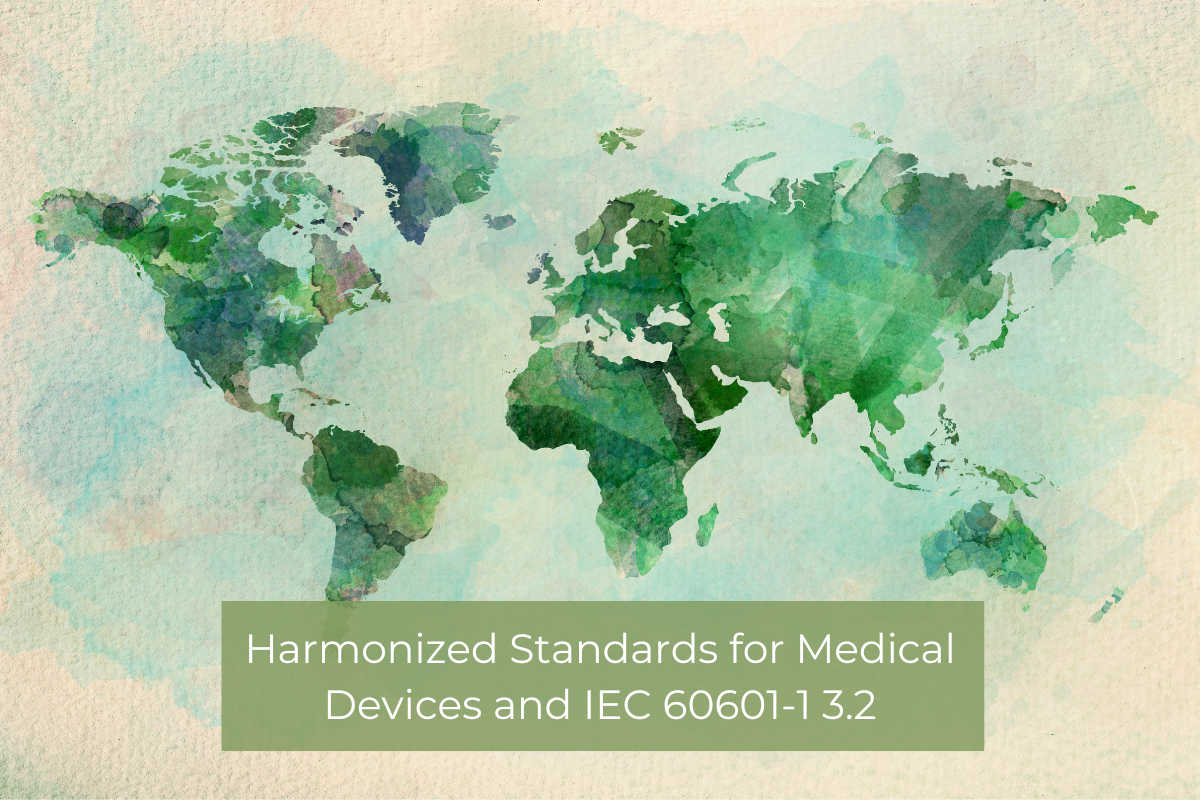Harmonized Standards for Medical Devices – The State of Harmonization with IEC 60601-1 3.2
Manufacturers face a number of hurdles when getting their medical devices approved for market. When working internationally, the challenges only grow. Not only do producers need to be concerned with complying to national standards that apply to their device, but they also need to think about how they can get their devices approved to be used in another country. To make the process easier, countries have worked to harmonize standards. Here’s what you need to know about harmonized standards for medical devices, and where harmonization stands for IEC 60601-1 Version 3.2.
What are harmonized standards for medical devices?
In an attempt to establish a unified standard that manufacturers can follow, harmonization works to find common ground between standards in different countries and reach an agreement on what’s acceptable across borders.
Manufacturers benefit from this by not having to worry about complying to multiple standards that can delay the launch of a product. They also don’t have to be concerned about the standards of one country conflicting with another.
Two main types of harmonization exist: Regional and international.
Regional Harmonization
Regional harmonization is a collaborative effort between standards development organizations in the same country. This can cut down time and reduce confusion for device manufacturers when needing to review national standards.
International Harmonization
Most of this article addresses international harmonization, adopting an international standard from an organization like International Electrotechnical Commission (IEC). The hope is that with these harmonized standards, individual national deviations are minimal.
Different countries have different timelines for approval. When a new standard comes through from the IEC, it may take longer for one country to recognize it than another.
What is the state of harmonization for 60601-1 standards?
United States
In the United States, the FDA has listed 60601-1 3.2 as a recognized standard as of May 30, 2022. This newest amendment will replace version 3.1 by December 17, 2023.
For OSHA/NRTL, versions 2.0, 3.0, 3.1, and 3.2 are all considered acceptable, with no announced end date for accepting prior versions.
European Commission
The European Commission has not yet adopted Edition 3.2. They also haven’t harmonized it with the General Safety and Performance Requirements (GSPR). However, it is expected that they will accept the standard before May 27, 2024. Even when it is accepted, the European Commission may recognize and support both the older and newer standards – there is no current announcement for what the transition period will look like for applicability to version 3.2.
Canada
The Canadian Standards Association (CSA) has approved and published an amendment for IEC 60601-1 3.2. They have not announced a transition to require the new standard.
China
China has its own standard that’s similar to IEC 60601-1 version 3.1. They also have a requirement for devices to get tested at a laboratory in China. If a particular product doesn’t apply under this standard, they will require GB 9706.1:2020 and related collaterals. So far, there’s no word of version 3.2 acceptance in China.
Other countries
Brazil nor Singapore have not announced an official transition over to version 3.2. However, they have deemed version 3.2 an acceptable standard. Similarly, for India, generally whichever standard is the latest to be published is accepted.
How should medical device manufacturers in the U.S. prepare for harmonized standards for medical devices?
If you’re a manufacturer of an electrical medical device, you should ensure that any devices that require approval on or after December 17, 2023 are compliant under 3.2 standards. Anything that is compliant with 3.2 is backwards compatible for 3.1, so it is beneficial to comply with 3.2 and be able to market effectively to any countries that recognize either standard.
At RAM Technologies, we want to serve as a useful step in your path to getting your device 60601-1 3.2 compliant. Our medical PSUs are compliant with 3.2 and we are now certified.
Don’t wait for the inevitable. Ready yourself for harmonized standards by preparing your devices for compliance under Amendment 2. Contact us with your questions today!
________________________
RAM Technologies’ power supplies are 60601-1 certified and meet 60601-1-2 EMC standards. Contact us for details.
More Resources:
What the FDA Moving to IEC 60601-1 3.2 Means for Manufacturers
4 Tips for Choosing a Medical-Grade Power Supply
5 Questions to Ask Before Buying a Medical Power Supply
Why Buy a Medical PSU from RAM Technologies?
60601-1 and Medical Device Manufacturing Tips



